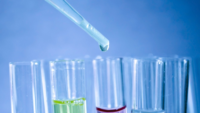EFSA Launches Modeling Platform to Predict Chemical Food Safety, Reducing Need for Animal Experiments

Image credit: tiburi via Pixabay
The European Food Safety Authority (EFSA) has introduced TKPlate, a new platform that can model and predict the toxicity and toxicokinetics of chemicals used in foods, which will help reduce the amount of animal testing used in food safety assessments.
Historically, safety assessments of chemicals in food and feed have relied on evidence from animal experiments. However, there are increasing ethical and scientific motivations for replacing, reducing, and refining animal testing—a concept known as the Three Rs.
The development of TKPlate was led by toxicologist Jean-Lou Dorne, Ph.D. and statistician/modeler Jose Cortiñas Abrahantes, Ph.D., both from EFSA, in collaboration with scientists at several top European research organizations. TKPlate is an online platform that offers a space and a suite of tools for scientists and regulators to model and predict toxicokinetic and toxicodynamic (toxicity) properties.
The idea for TKPlate arose in 2014 with a scientific report on alternative methods to animal testing that could be used by EFSA’s experts. The report proposed the development of a series of toxicokinetic and toxicity models. Toxicokinetics refers to how the body absorbs, distributes, metabolizes and excretes a chemical, while toxicodynamics explores the toxic effects of a chemical on molecules, cells, tissues, organs, or a whole organism.
Between 2015 and 2020, EFSA developed toxicokinetic models and produced many case studies for a range of species relevant to EFSA’s work, including humans, test animals like rats and mice, farm animals, and other species that have a role in the food and feed chain, like earthworms. Dr. Dorne and Dr. Cortiñas Abrahantes commissioned academic partners and national agencies to conduct different components of the project, resulting in several young scientists successfully achieving doctorate degrees. In addition to the models produced between 2015 and 2020, others are still being developed in the present day.
As far as EFSA is aware, TKPlate is a unique platform in the food and feed safety sector, enabling risk assessors and others involved in toxicology to model toxicokinetic and toxicodynamic processes in any of the species included in the platform. To operate TKPlate, a scientist would select a species, pick a chemical or group of chemicals, input parameters such as exposure type, and finally, run the models with the click of a button. The platform produces an automated report that provides details of all the inputs and outputs, data, and graphs, which can be used as part of the evidence base for a scientific assessment.
The platform calculates the concentrations of chemicals inside a body based on intake levels (toxicokinetics) and predicts the effects (toxicodynamics) the chemicals can cause. The results can directly replace animal data, reducing the need for new experiments. TKPlate also works reverse, with the ability to estimate an organism’s exposure to a chemical by inputting existing data like blood or urine concentrations. The platform has many additional features, including toxicokinetic-toxicodynamic modeling and a tool for assessing risks from chemical mixtures.
The development of the models included in TKPlate was complex, as they reflect a conceptual framework about how a substance interacts with an organism. Since all models are a simplification of reality, the challenge lies in trying to capture the process as accurately as possible, reducing the complexity to achieve something generalizable. Trying to mimic the full process of a chemical within an organism is not realistic, so the scientists had to consider which components to retain to make the models as resilient as possible if their assumptions were inaccurate or faulty.
However, with tools like TKPlate becoming viable, their reliability as evidence sources must be considered. As with all scientific information, the predictions provided by the platform’s models have variability and uncertainty, depending on the data available for the species and the chemical being tested. Such variabilities and uncertainties are reported transparently in a range of case studies using international standards to assess the reliability of each model.
All of the modeling work outsourced by EFSA required extensive tuning, testing, and validation, using not only existing experimental animal data but also additional lab data generated by the contractors. The case studies tested the model results in different contexts and for different species, producing results that are coherent with the scientists’ expectations. As a result, EFSA is confident in the reliability and robustness of the models.
The integration of the models into a user-friendly interface—TKPlate—is an important step to implement their use in chemical risk assessment at EFSA and beyond.
Carlos Gonçalo das Neves, Ph.D., is EFSA’s Chief Scientist and an avid promoter of New Approach Methodologies (NAMs) like TKPlate. He stated that some software-based NAMs are already in use at EFSA and are playing a growing role in some of the agency’s risk assessments.
Although TKPlate was only recently launched and is not yet being used in EFSA’s assessments, applications of its models are being explored to optimize the platform and to priorities training for EFSA staff and experts across Europe. Such activities will support its use in risk assessment by EFSA’s scientific panels, hopefully in the near future. The agency also intends to roll out support for TKPlate implementation to other EU agencies and national authorities.
Looking for a reprint of this article?
From high-res PDFs to custom plaques, order your copy today!






